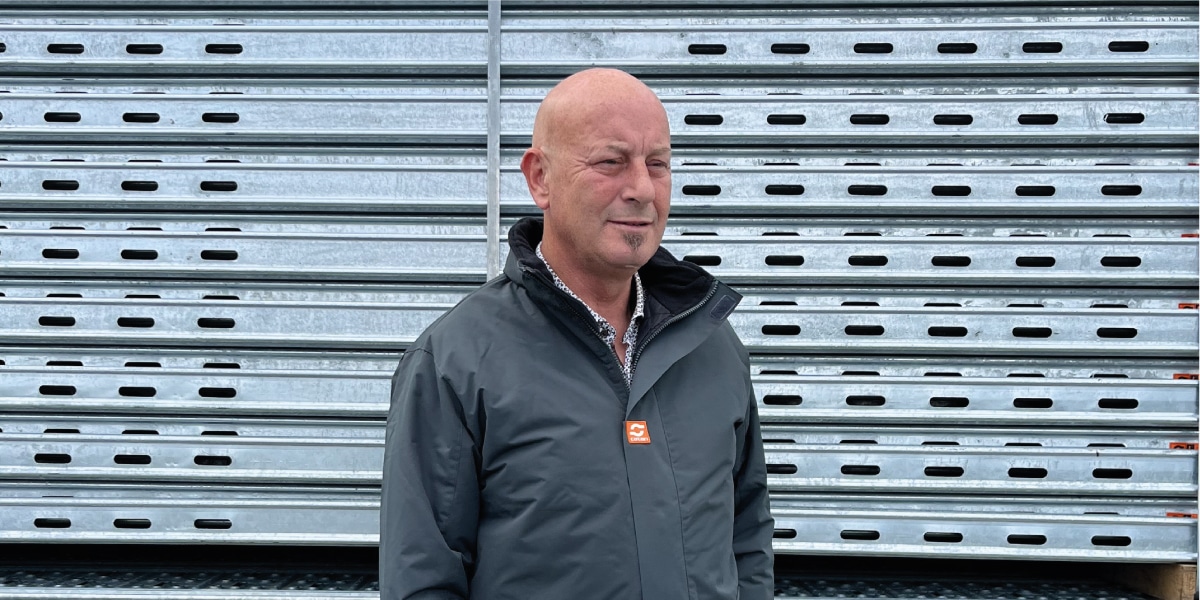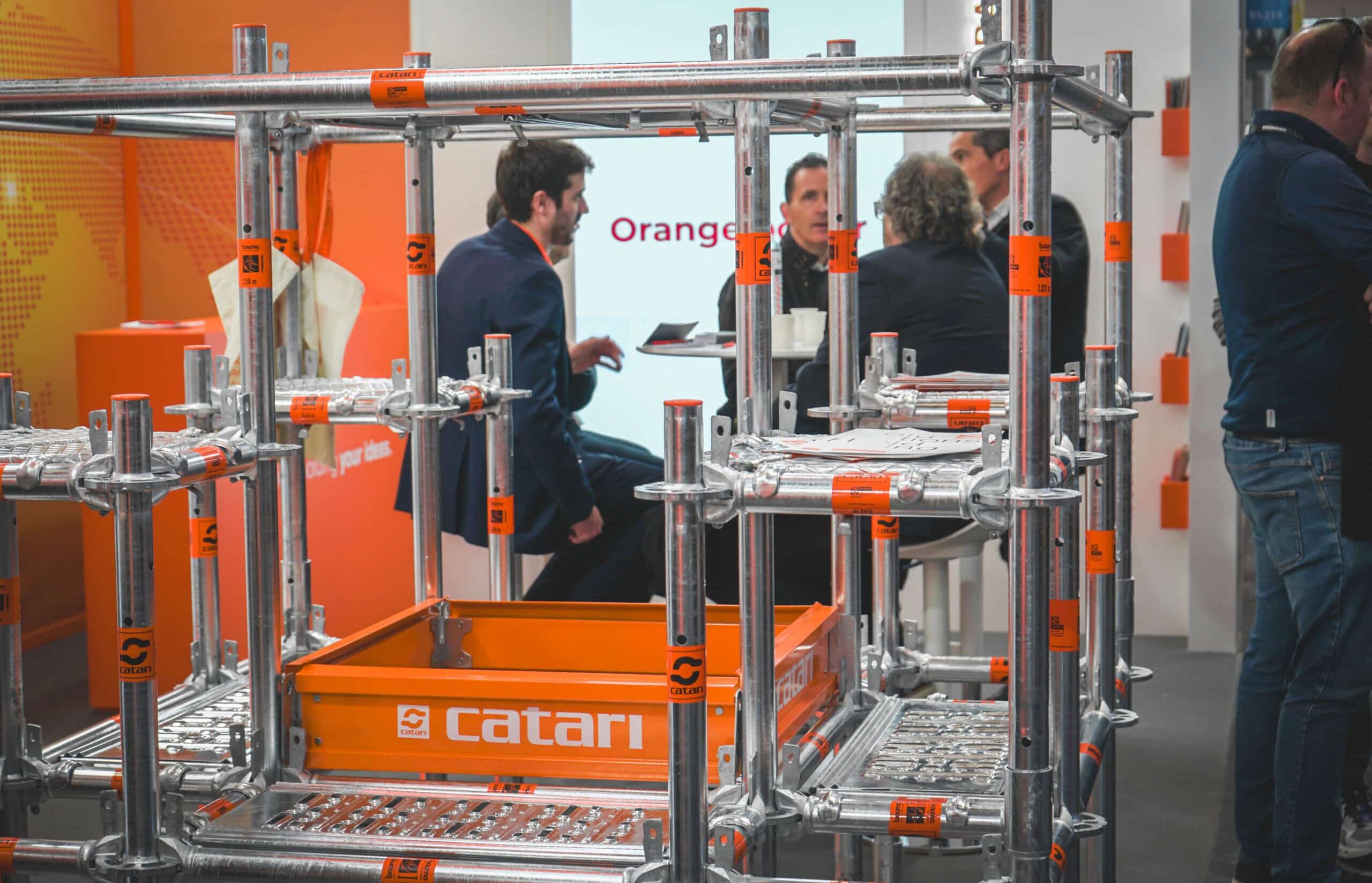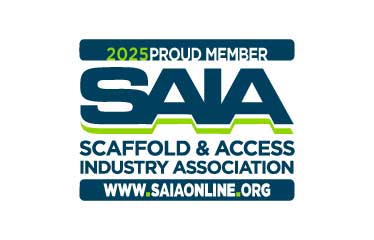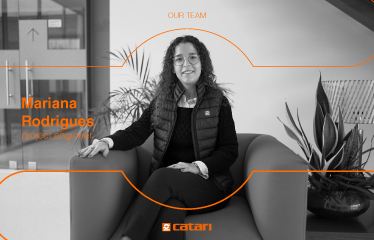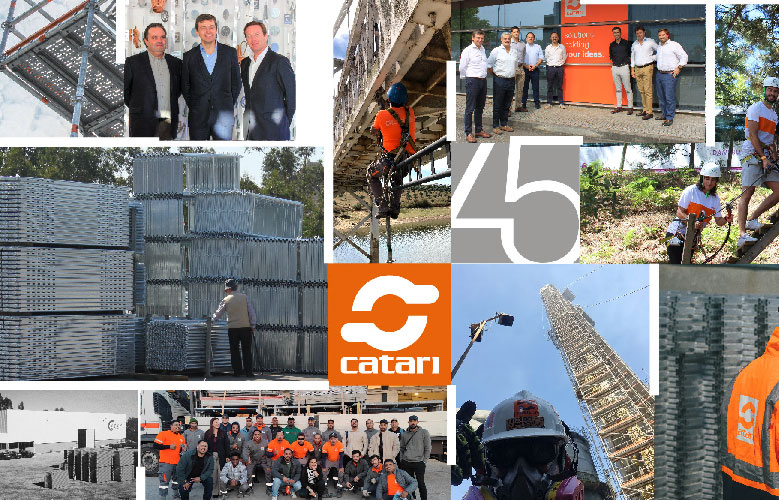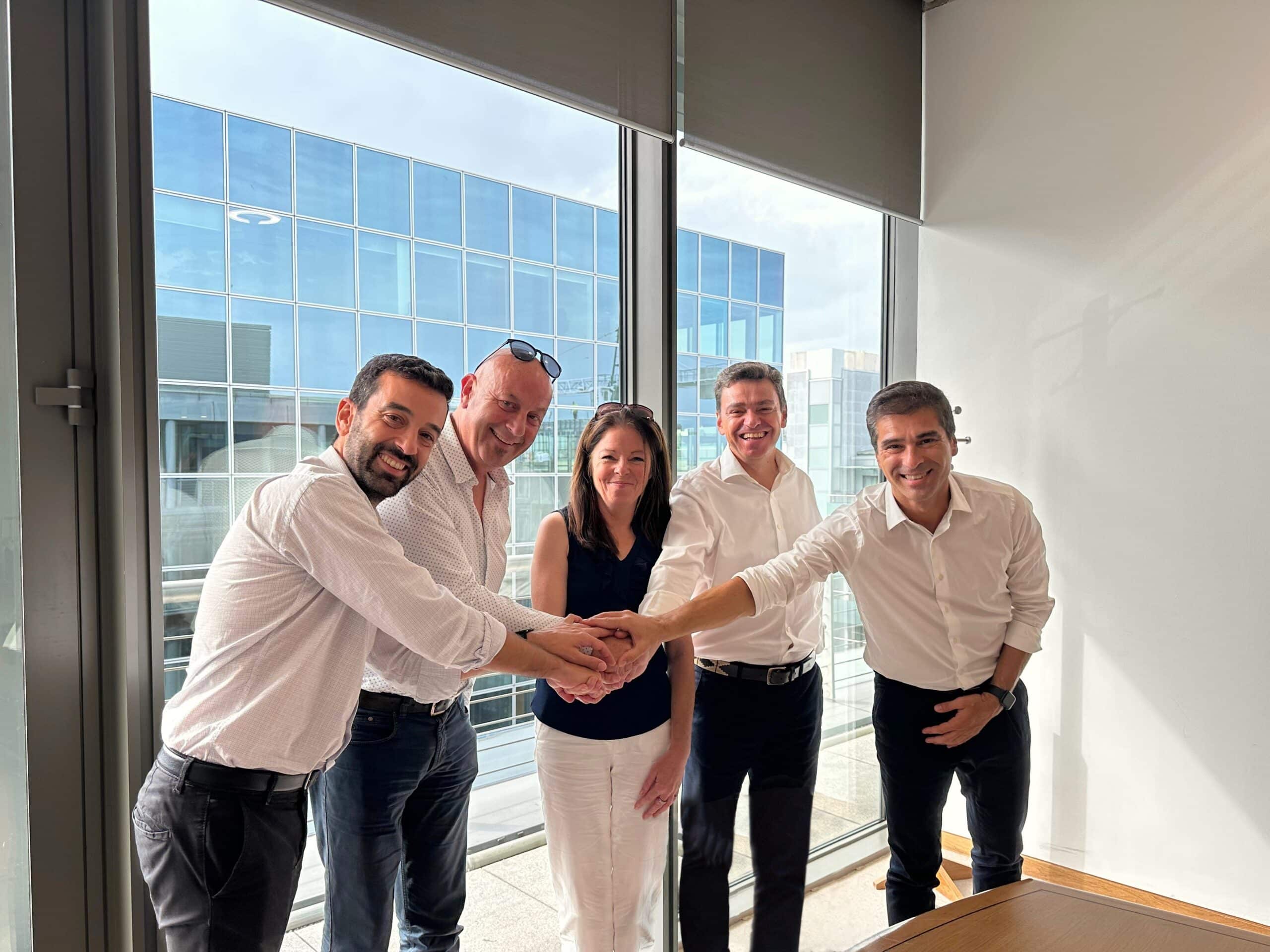
Challenges in the Irish Scaffolding Industry by John Carolan
Catari Ireland: Insights from Manager John Carolan
Roughly two months after the opening of Catari Ireland, we invited our general manager, John Carolan, to reflect on the challenges in the scaffolding sector in Ireland. A chronological journey through the mind of someone with a deep experience in the industry and the market, but above all, a passionate reflection on the sector. Discover Catari as a new partner and a fresh opportunity for Irish companies, paving the way for a future in which innovations are dedicated to serving the customer.
Challenges in the Scaffolding Industry: a perspective by John Carolan
In Ireland, a range of scaffold gears continues to be employed, including tube and clamp, kwikstage, cuplock, and, more recently, system scaffold. While there are now fewer doubts about the efficiency of system scaffold in addressing some of the industry’s most pressing challenges, such as labor shortages and heightened worker safety concerns, this wasn’t always the prevailing sentiment.
Back in the mid-90s, when Jane and I embarked on our journey as Supply & Erect contractors in the Leinster region, kwikstage scaffold was the prevailing choice. It was only when we undertook projects for clients like Intel and Facebook’s head office that we realized the necessity for a cleaner and more reliable system, given the nature of our clients’ businesses.
We were among the first to embrace the ringlock system, even though, at the time, it came with a higher price tag compared to kwikstage.
Looking back, I have no doubts about the cost-efficiency derived from the ringlock system’s versatility and higher assembly rates. Its design allows for multiple connection points on vertical standards, providing the flexibility to adjust platform height and shape to meet specific project needs.
In contrast, kwikstage scaffold often requires more components and adjustments to accommodate non-standard configurations. Not to mention the use of timber planks,
which pose a definite slip hazard and are losing relevance in today’s modern and safety-conscious scaffolding industry.
The components of a ringlock system typically consist of fewer parts and are designed for secure locking with minimal effort. This translates to quicker setup times compared to other scaffold systems, which may demand more time and effort to fit and secure individual components like ledgers and transoms.
Not surprisingly, there is a dwindling interest in pursuing a career as a scaffolder. It’s a physically demanding job, exposed to various adverse weather conditions, and, most significantly, carries a risk of severe injuries in case of accidents. With changing societal trends, including the emergence of digital-related jobs, there has been a noticeable shift in career preferences away from traditional trades like scaffolding. While commendable efforts by authorities to implement recognized qualification systems, encompassing practical and theoretical training, coupled with pertinent legislative, technical, and health & safety changes, have aimed to alter this perception, they have also led to increased labor costs. I hold a firm belief that the widespread adoption of system scaffold will emerge as a crucial solution to the labor scarcity that has been plaguing our sector. Not only does system scaffold significantly reduce the required training time, but it also excels as a much safer product. This dual advantage not only attracts fresh labor to our industry but also ensures a more secure and productive working environment for all involved.
Another emerging and noteworthy trend that has become increasingly evident is the increasing demand for lighter yet equally robust system scaffold to enhance efficiency and productivity. European scaffold producers, like Catari, are already embracing this user-centered design philosophy, incorporating higher-strength steels and novel raw materials previously uncommon in scaffolding. This shift not only makes the assembly and disassembly of scaffold more manageable but also simplifies transportation and logistics, delivering substantial time and cost savings for projects of all sizes.
As the industry progresses and embraces these transformative trends, it becomes evident that scaffolding solutions are evolving to meet the ever-changing needs of construction projects. The synergy of user-centered design, advanced materials, and a relentless pursuit of efficiency is propelling system scaffold into an era characterized by heightened productivity, durability, and adaptability. This shift not only bolsters the industry’s ability to meet the challenges of today but also positions it favorably for the opportunities and demands of tomorrow.
Peering into the future, it’s impossible not to anticipate the emergence of “smart scaffolding”. Envision scaffold components interwoven with sensors and data connectivity, enabling real-time feedback and data acquisition for in-depth analysis. Such breakthroughs have the potential to introduce sweeping changes throughout the industry. Processes that currently consume significant time, such as scaffold component tracking in the rental business or real-time safety notifications to authorities regarding overloads or structural shifts following severe weather events, might appear akin to science fiction today. However, the march of progress assures us that these innovations will soon become commonplace in our industry, ushering in tangible benefits and elevating safety and efficiency across the board.
But going back again to 2023, I’m very happy to share that Catari has just opened a depot in Dublin. In fact, Catari has been present in the market since 2016. The excellent reception of Catari US® ringlock scaffold played a pivotal role in this decision. However, the true motivation behind this move was our understanding of the challenges faced by our customers in the scaffolding industry.
We understood that it was challenging to offer a complete package of support for our customers’ projects without having materials immediately on hand. This package includes determining commissioning quantities, 3D project design, construction drawings, static calculations, project execution planning, hands-on training, and site support. While accurate planning and material lists are essential, the reality on construction sites often deviates from these predictions. So, our core objective is to address the lead time issue and become a reliable and convenient choice in Ireland for those in the scaffolding sector. This applies whether you’re working on a simple street scaffold, an apartment block, or even the most complex industrial scaffold constructions. We are committed to bringing a top-quality product to the market at competitive prices and becoming a necessary alternative to the ringlock systems already available.
This takes me to another important consideration that customers often raise pertains to the possibility of mixing components of ringlock scaffold from different brands or producers within the same scaffold assembly. This practice, which has been prevalent in Ireland for tube and clamp, kwikstage, or cuplock systems for as long as I can remember, is gradually making its way into the ringlock system, as observed in other markets. Drawing from my experience as a Supply & Erect scaffold company, as I’ve been for more than 10 years, my foremost concern is to ensure the seamless compatibility of scaffold components, allowing for a hassle-free assembly process. Additionally, I place great emphasis on compliance with EN 12810, the European standard that governs scaffold production in all Europe. This standard sets crucial guidelines for safety and quality, and adherence to it is paramount for the integrity and safety of scaffold systems. As the industry continues to evolve, it becomes increasingly important to uphold these standards and foster trust among customers and stakeholders.
Be a Lucky Scaffolder
As we face the challenges in the scaffolding industry and welcome the arrival of Catari in Ireland, I’m reminded of the resilience and spirit of the Irish people. We’ve endured a tough history with humility and pride, and it’s this very spirit that inspires us to say, ‘Be a lucky scaffolder’. May your scaffolding endeavors in Ireland be as fortunate as the shamrock, and may Catari bring the reliability you deserve. In the words of Bono from U2, ‘You can dream, so dream out loud’.
Let’s dream of a safer and more efficient scaffolding industry together.
Contact us
Headquarters / Industry
MOBILE PHONE +351 256 420 890 ADDRESSZona Industrial do Rossio Av. da Indústria
3731-900 Vale de Cambra Portugal
Logistics center
ADDRESSZona Industrial da Farrapa Chave
4540-267 Arouca, Portugal
